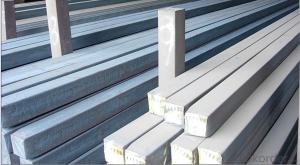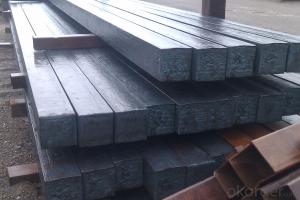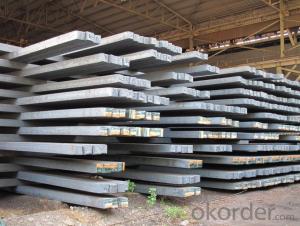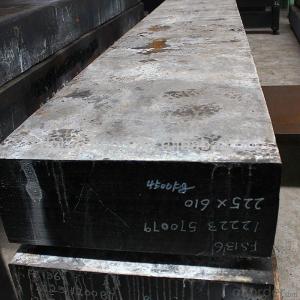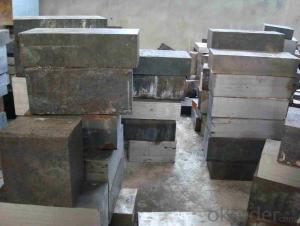Prime quality prepainted galvanized steel 715mm
- Loading Port:
- Tianjin
- Payment Terms:
- TT OR LC
- Min Order Qty:
- 100 m.t.
- Supply Capability:
- 10000 m.t./month
OKorder Service Pledge
OKorder Financial Service
You Might Also Like
Construction building material galvanized color prepainted cold
rolled steel coil
Prepainted steel sheet is coated with organic layer, which provides higher anti-corrosion property and
a longer lifespan than that of galvanized steel sheets.
The base metals for prepainted steel sheet consist of cold-rolled, HDG electro-galvanized and hot-dip
Alu-zinc coated. The finish coats of prepainted steel sheets can be classified into groups as follows:
polyester, silicon modified polyesters, polyvinylidene fluoride, high-durability polyester, etc
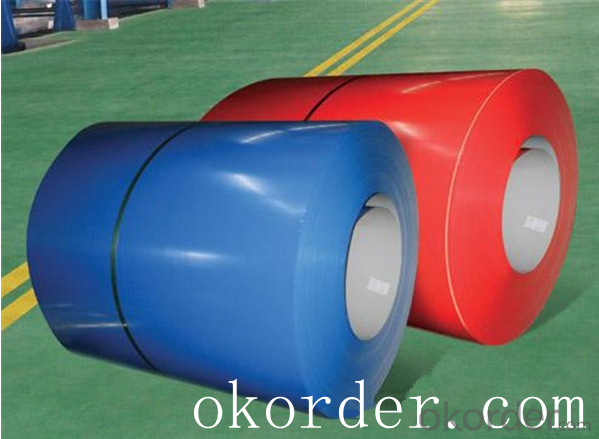
Standard and Grade :
Pre-paint galvanized steel coil | ||||
ASTM A755M-03 | EN10169:2006 | JISG 3312-2012 | ||
Commercial quality | CS | DX51D+Z | CGCC | |
Structure steel | SS GRADE 230 | S220GD+Z | CGC340 | |
SS GRADE 255 | S250GD+Z | CGC400 | ||
SS GRADE 275 | S280GD+Z | CGC440 | ||
SS GRADE 340 | S320GD+Z | CGC490 | ||
SS GRADE550 | S350GD+Z | CGC570 | ||
S550GD+Z | ||||
Application:
Outdoor | Roof, roof structure, surface sheet of balcony, frame of window, door of garage, rolled shutter door, booth, Persian blinds, cabana, etc |
Indoor | Door, isolater, frame of door, light steel structure of house, home electronic appliances, ect. |
Specifications
Commodity Name: Prepainted Galvanized Steel Coil
Standard: AISI, ASTM, DIN, GB, JIS
Grade: TDC52D+Z
Thickness 0.13-8.0mm
Width:600mm-1350mm
Zinc Coating:275g/m2
Polyester Coating Thickness:Top and Back coating thickness depend by Buyer Requirement.
Polyester Coating Type:2/2,1/2m,1/2.
Polyester Type: Polyester, silicone modified polyester, high durability polyester (HDP), polyvinylidene fluoride (PVDF)
Unit Roll Weight:5-20tons
Place of Origin Shanghai , China (Mainland)
Surface Treatment :Color Coated
Manufacture Progress:HRC-CRC-GALVANIZED-COLOR COATED
Application : Construction, electrical, transportation, steel plant, composite board plant, steel tile factory
Payment & Shipping Terms:T/T ,L/C, and FOB CHINA
Minimum Order Quantity: 25Tons
Packge Type: Moisture-proof paper inner,Steel outside,Bundle by steel rope.
Package in Container : Wood as a foot pad, wire rope reinforcement,PPGI steel coil tied together by steel rope.
- Q:What is the role of steel billets in the construction of residential buildings?
- Steel billets play a crucial role in the construction of residential buildings. These long, rectangular-shaped steel bars serve as the primary raw material for the production of various structural components used in the construction process. One of the key applications of steel billets is in the fabrication of reinforced concrete structures. Reinforced concrete is widely used in building foundations, columns, beams, and slabs due to its high strength and durability. Steel billets are used to manufacture rebar, which is then embedded within the concrete to provide tensile strength and enhance the structural integrity of the building. The use of steel reinforcement ensures that the building can withstand external forces, such as wind, seismic activity, and the weight of the structure itself. Additionally, steel billets are utilized in the production of steel beams and columns. These components are essential for supporting the weight of the building and transferring loads from the upper floors to the foundation. Steel beams offer superior strength and rigidity, allowing for the construction of open, spacious interiors without the need for excessive support walls. This not only provides flexibility in design but also maximizes the usable space in residential buildings. Steel billets are also utilized in the construction of stairs, handrails, and balconies. These elements require high-strength materials to ensure the safety and longevity of the structure. Steel billets provide the necessary strength and stability to these components, allowing for safe and secure access to different areas of the building. In summary, steel billets are crucial in the construction of residential buildings as they serve as the raw material for various structural components. From reinforced concrete structures to steel beams, columns, and other architectural elements, steel billets play a vital role in ensuring the strength, durability, and overall safety of residential buildings.
- Q:What is the role of steel billets in the construction industry?
- Steel billets are of great importance in the construction industry as they serve as the primary raw material for producing various steel products used in construction projects. These billets, which are semi-finished steel forms, can be hot-rolled or forged into different shapes and sizes like bars, rods, beams, and wire. The primary purpose of steel billets is to provide the necessary strength, durability, and structural integrity to buildings, bridges, and other infrastructure. They are utilized in constructing foundations, columns, beams, and other load-bearing structures where their high tensile strength and resistance to external forces are crucial. Moreover, steel billets are extensively employed in reinforcement applications. They are utilized to create reinforcing steel bars, also known as rebars, which are embedded within concrete structures to enhance their strength and resistance to tension. These rebars play a critical role in preventing cracks and failures in concrete structures, ensuring their long-term stability and safety. Additionally, steel billets are used in the manufacturing of various construction components such as pipes, tubes, and wires. These components are essential for plumbing, electrical wiring, and other utility installations in buildings and infrastructure projects. In conclusion, steel billets are a fundamental raw material in the construction industry. Their versatility, strength, and durability make them indispensable for creating sturdy and reliable structures, reinforcing concrete elements, and manufacturing essential construction components.
- Q:What are the main factors that determine the profitability of steel billets manufacturers?
- The profitability of steel billets manufacturers is influenced by several key factors. These factors can vary depending on various market conditions and industry dynamics. However, some of the main factors that determine profitability in this sector include: 1. Raw material costs: The cost of raw materials, such as iron ore and scrap metal, is a significant determinant of profitability. Fluctuations in these costs can impact the overall cost structure of steel billet production. Manufacturers with efficient procurement strategies and long-term raw material contracts may have a competitive advantage in managing these costs. 2. Production efficiency: The efficiency of the manufacturing process plays a crucial role in determining profitability. This includes factors such as production capacity utilization, energy consumption, labor productivity, and waste management. Manufacturers that can optimize their operations and minimize costs are more likely to achieve higher profitability. 3. Market demand and pricing: The demand for steel billets is influenced by various factors, including construction activity, infrastructure development, and manufacturing output. Manufacturers that can accurately forecast and meet market demand are better positioned to achieve profitability. Additionally, the ability to negotiate favorable pricing and manage price fluctuations in the market can significantly impact profitability. 4. Competitive landscape: The level of competition within the steel billets manufacturing industry can affect profitability. Manufacturers operating in a highly competitive market may face challenges in maintaining profit margins due to price pressures. Companies that can differentiate themselves through innovation, quality, and customer service may have a better chance of achieving sustainable profitability. 5. Operating costs: Apart from raw material costs, other operating expenses, such as transportation, energy, maintenance, and overhead costs, can impact profitability. Efficient cost management practices, such as implementing lean manufacturing principles and optimizing supply chain logistics, can help reduce operating costs and improve profitability. 6. International trade and tariffs: Steel billets manufacturers are often affected by international trade dynamics and tariffs. The imposition of tariffs on steel imports or exports can disrupt the market and impact profitability. Manufacturers that can adapt to changes in trade policies and diversify their customer base or sourcing locations may be better positioned to mitigate these risks. 7. Currency exchange rates: Steel billets manufacturers that engage in international trade may be exposed to currency exchange rate fluctuations. These fluctuations can impact the cost of imported raw materials or the competitiveness of exported products. Manufacturers that have effective currency hedging strategies or local production capabilities may be better able to manage these risks and maintain profitability. Overall, the profitability of steel billets manufacturers is influenced by a combination of factors, including raw material costs, production efficiency, market demand, competition, operating costs, international trade dynamics, and currency exchange rates. Successful manufacturers in this industry must carefully analyze and manage these factors to achieve sustainable profitability.
- Q:How are steel billets used in the manufacturing of furniture?
- Furniture manufacturing commonly utilizes steel billets as the primary material for various components. These billets undergo heating and molding processes to take on different shapes, ultimately forming the structural framework of chairs, tables, and bed frames. The use of steel in furniture production is preferred due to its malleability and strength, which contribute to the durability and stability of the final product. Furthermore, steel billets can be easily welded and joined together, allowing for the creation of intricate designs and structures. In summary, steel billets play a crucial role in the manufacturing of high-quality and long-lasting furniture pieces, providing the necessary strength and versatility.
- Q:Can steel billets be painted or coated for decorative purposes?
- Steel billets can indeed be painted or coated to achieve decorative purposes. By painting or coating steel billets, not only is their appearance improved, but they are also safeguarded against corrosion and other environmental factors. A variety of paints and coatings, including epoxy, powder coating, and metallic finishes, can be utilized to achieve the desired decorative effect. These coatings can be applied to steel billets using methods such as spray painting, electrostatic coating, or hot-dipping. To ensure a strong bond and long-lasting decorative finish, it is crucial to properly prepare the surface of the steel billets before applying the paint or coating.
- Q:How are steel billets used in the production of mining equipment?
- Due to their strength, durability, and versatility, steel billets are crucial for the production of mining equipment. These billets are typically made by pouring molten steel into a mold, resulting in a solid rectangular shape. They are then used as raw material in the manufacturing process of mining equipment. Mining operations require robust and reliable components for equipment such as excavators, bulldozers, and crushers, to withstand harsh conditions and heavy loads. Steel billets provide the necessary structural integrity and toughness, ensuring efficient and safe equipment operation. Once obtained, steel billets undergo various techniques such as forging, machining, and welding to transform them into specific parts and components. Forging can create heavy-duty gears, shafts, and axles, which are essential for mining equipment. Machining steel billets allows for custom-made components that fit seamlessly into mining equipment. This process involves cutting, drilling, and milling to create parts like buckets, cutting edges, and chassis. In addition, welding steel billets together creates complex structures and ensures equipment integrity and strength. This is particularly important in mining equipment construction, where safety and reliability are paramount. In conclusion, steel billets are vital for producing mining equipment as they provide the necessary raw material. Their strength, durability, and versatility allow for the creation of robust and reliable components that can withstand the demanding conditions of mining operations.
- Q:How are steel billets used in the energy and power generation industry?
- Steel billets are used in the energy and power generation industry for various purposes such as manufacturing turbine blades, generator parts, and structural components of power plants. These billets are essential in creating strong and durable equipment that can withstand the demanding conditions and high temperatures associated with energy production.
- Q:What is the typical hardness of a steel billet?
- The typical hardness of a steel billet can vary depending on various factors such as the specific type of steel, the manufacturing process, and the intended use of the billet. In general, steel billets are designed to possess a certain level of hardness to ensure their suitability for subsequent processing and applications. Hardness in steel is often measured using the Rockwell hardness scale, which assigns a numerical value based on the depth of penetration of an indenter into the material. Steel billets typically have a hardness ranging from 20 to 70 on the Rockwell C scale (HRC), with higher values indicating greater hardness. However, it is important to note that the desired hardness can vary depending on the intended use of the billet. For example, if the billet is intended for use in structural applications or as a raw material for further processing, it may have a lower hardness to facilitate subsequent shaping and forming processes. On the other hand, if the billet is meant for applications that require high strength and wear resistance, such as in the production of tools or machinery components, it may have a higher hardness. Ultimately, the typical hardness of a steel billet will depend on the specific requirements and specifications of the intended application, and it is important to consult the relevant standards or technical specifications to determine the appropriate hardness range for a particular steel billet.
- Q:How do steel billets contribute to the overall cost-effectiveness of a project?
- There are several ways in which steel billets contribute to the cost-effectiveness of a project. To begin with, steel billets serve as the initial material for various steel products, such as beams, bars, and sheets. Manufacturers can produce these products in a cost-effective manner by utilizing steel billets, which are usually less expensive than finished steel products. Furthermore, the use of steel billets allows for the efficient utilization of resources. They can be easily melted down and shaped into different forms and sizes, thereby reducing waste during the production process. This adaptability diminishes the amount of raw material required, resulting in cost savings. In addition, steel billets possess exceptional strength and durability characteristics. By incorporating steel billets into construction projects, engineers can ensure the solidity and longevity of the structures. This helps to decrease maintenance and repair expenses over time, ultimately enhancing the project's cost-effectiveness. Moreover, steel billets are readily available in the market, making them a cost-effective option for projects with tight schedules. Manufacturers can easily procure steel billets from various suppliers, ensuring a consistent supply of material for the project. Lastly, steel billets contribute to cost-effectiveness through their recyclability. Steel is one of the most widely recycled materials globally, and the use of recycled steel billets can significantly reduce production costs. The recycling of steel billets also aids in minimizing the environmental impact of a project, making it a more sustainable and cost-effective choice. All in all, steel billets play a crucial role in enhancing the cost-effectiveness of a project by providing an economical starting material, reducing waste, ensuring durability, facilitating availability, and promoting recycling.
- Q:What is the difference between continuous casting billet and cast billet?
- Mainly to see the process, general casting efficiency is low, but the quality is acceptable, with low level (open casting billet) has great advantages in surface quality; but with high-grade continuous casting line (full protection casting, electromagnetic stirring, liquid stopper control) compared both have a big difference in the crystal, oxidation, surface quality.
1. Manufacturer Overview |
|
|---|---|
| Location | |
| Year Established | |
| Annual Output Value | |
| Main Markets | |
| Company Certifications | |
2. Manufacturer Certificates |
|
|---|---|
| a) Certification Name | |
| Range | |
| Reference | |
| Validity Period | |
3. Manufacturer Capability |
|
|---|---|
| a)Trade Capacity | |
| Nearest Port | |
| Export Percentage | |
| No.of Employees in Trade Department | |
| Language Spoken: | |
| b)Factory Information | |
| Factory Size: | |
| No. of Production Lines | |
| Contract Manufacturing | |
| Product Price Range | |
Send your message to us
Prime quality prepainted galvanized steel 715mm
- Loading Port:
- Tianjin
- Payment Terms:
- TT OR LC
- Min Order Qty:
- 100 m.t.
- Supply Capability:
- 10000 m.t./month
OKorder Service Pledge
OKorder Financial Service
Similar products
New products
Hot products
Related keywords
